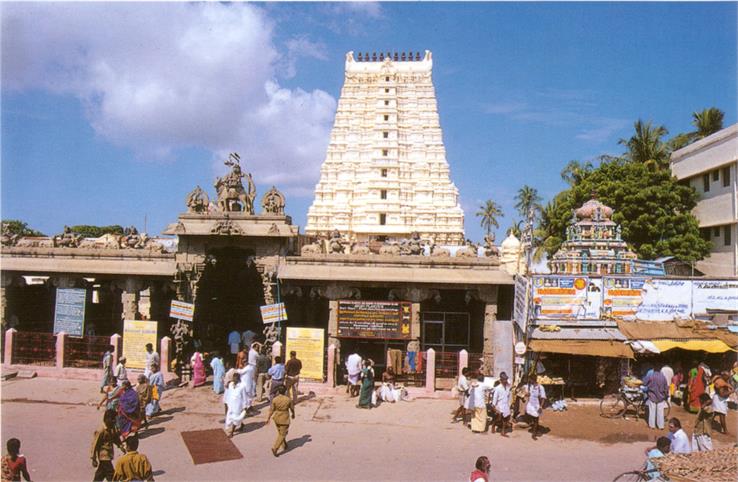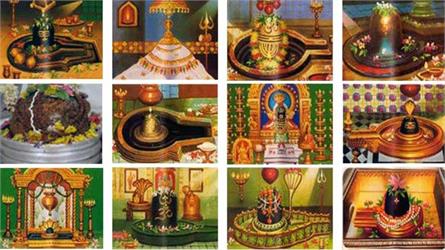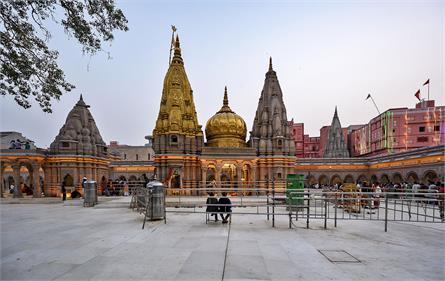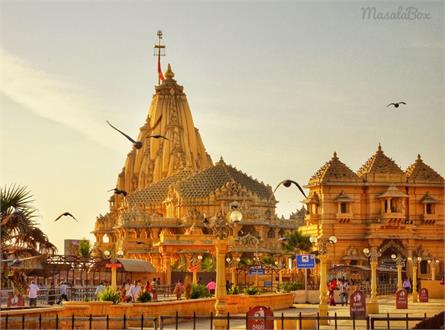Feel The Divine Energy of Lord Shiva At Rameshwaram Temple

If you are looking for a spiritual getaway that combines history, culture and natural beauty, then Rameshwaram Jyotirlinga is the place for you. This ancient temple, dedicated to Lord Shiva, is one of the twelve Jyotirlinga shrines in India and one of the four/Char Dham pilgrimage sites. Located on Pamban Island in Tamil Nadu, this temple attracts millions of devotees every year who come to seek the blessings of the supreme deity and experience the divine energy of the place.
Also Read: The Story of Nageshwar Jyotirlinga
The Legend of Rameshwaram Jyotirlinga
The origin of Rameshwaram Jyotirlinga is linked to the epic Ramayana, which narrates the story of Lord Rama, the seventh avatar of Lord Vishnu. He (Lord Rama) fought against the demon king Ravana to rescue his wife, Sita. According to the legend, after defeating Ravana in Lanka (present-day Sri Lanka), Rama wanted to worship Lord Shiva to absolve himself of the sin of killing a Brahmin (Ravana was a Brahmin by birth).
He asked his loyal devotee Hanuman to bring a Shiva Linga (an iconic symbol of Shiva) from Mount Kailash, the abode of Shiva. However, Hanuman took a long time to return with the Linga, and Rama was worried he would miss the auspicious time for the worship. Therefore, Sita made a Linga out of sand from the nearby seashore and gave it to Rama. Rama installed and worshipped this Linga, known as Ramanathaswamy or Ramalinga.

When Hanuman returned with the Linga from Kailash, he was disappointed to see that Rama already installed another Linga. He tried to remove the sand Linga but could not because it was firmly fixed. He realized that it was the will of Lord Shiva and bowed down to Rama.

Rama pacified Hanuman and told him he would also worship the Linga he brought. He installed this Linga next to the sand Linga and named it Vishwalinga. He also decreed that the Vishwalinga should be worshipped first before the Ramalinga.
Thus, there are two Jyotirlingas at Rameshwaram, one made by Sita and the other brought by Hanuman. Both are revered by the devotees who visit this holy temple.
Also Read: Baidyanath Temple The Shakti Peeth And Jyotirlinga
Legend of Pandavas
The legend of Pandavas related to Rameshwaram temple Jyotirlinga is as follows:
The Pandavas were the five sons of Pandu, the king of Hastinapura, and their wife, Draupadi. They fought against their cousins, the Kauravas, in the epic war of Kurukshetra, which was a righteous war to uphold dharma (duty). However, they also incurred the sin of killing their relatives and many innocent people in the war. They decided to pilgrimage to various holy places in India to atone for their sins. One of the places they visited was Rameshwaram, where Lord Rama worshipped Lord Shiva after killing Ravana.
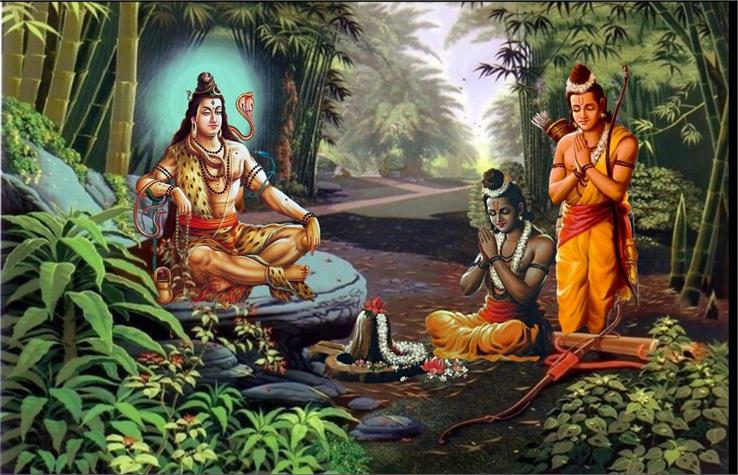
The Pandavas also wanted to worship Lord Shiva and seek his forgiveness. They reached the temple and saw the two Jyotirlingas, one made by Sita and the other brought by Hanuman. They first worshipped the Vishwalinga brought by Hanuman, as instructed by Lord Rama. Then they worshipped the Ramalinga made by Sita.
However, when they were about to leave, they heard a divine voice saying they had not completed their worship. The voice told them they had to worship another Jyotirlinga hidden under the sand near the seashore. The voice said that this Jyotirlinga was installed by Lord Shiva himself when he came to bless Lord Rama after his victory over Ravana. This Jyotirlinga was known as Sethumadhava or Sethulinga.
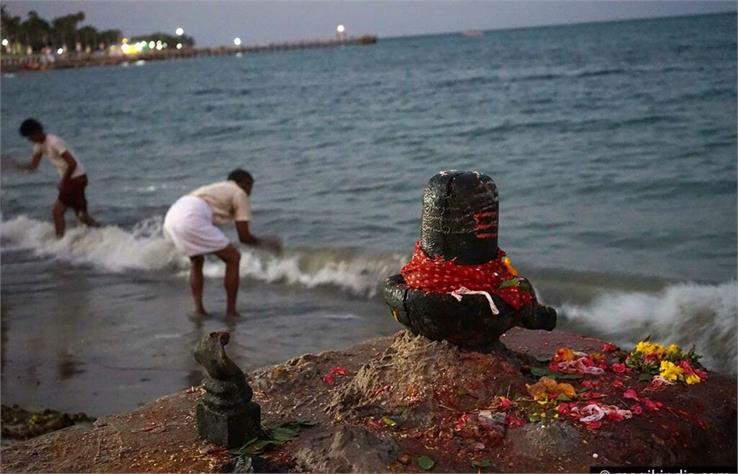
The Pandavas were surprised and curious to see this Jyotirlinga. They went to the seashore and dug up the sand. They found a beautiful Jyotirlinga shining with divine light. They worshipped it passionately and felt a sense of peace and joy in their hearts. They realized this was the most powerful and sacred Jyotirlinga among the three in Rameshwaram. They thanked Lord Shiva for his grace and mercy and continued their pilgrimage.
Also Read: The Story of Kashi Vishwanath Jyotirlinga
The Architecture of Rameshwaram Jyotirlinga
Rameshwaram Jyotirlinga is a magnificent example of Tamil architecture, its towering gopurams (gateway towers), intricate carvings and long corridors. The temple complex covers an area of 15 acres and has three prakaras (enclosures) and 22 tirthas (holy water bodies). The main shrine houses the Ramalingam and the Vishwalingam, along with an idol of Nandi (the bull mount of Lord Shiva) that is 17.5 feet tall. The other shrines in the temple are dedicated to Goddess Parvati, Lord Ganesha, Lord Subrahmanya, Lord Vishnu and other deities.
The temple's most striking feature is its 1212-meter-long corridor along the outer prakara. It has 1212 pillars on both sides and is considered the longest corridor in any Hindu temple in India. The corridor also has beautiful paintings depicting scenes from Hindu mythology and sculptures of various gods and goddesses.
Also Read: The Mystery of Kedarnath Jyotirlinga
Best Time to Visit Rameshwaram Jyotirlinga

You can visit Rameshwaram Jyotirlinga any time of the year, but the best time would be between October and April when the weather is pleasant and conducive for sightseeing. You can also witness some festivals and celebrations during this period, such as Maha Shivaratri (February-March), Ram Navami (March-April), Thirukalyanam (July-August) and Navratri (September-October).
Rameshwaram Jyotirlinga is not just a temple but a living testimony of faith, devotion and grace. It is a place where you can feel closer to Lord Shiva and experience his benevolence and power. It is a place where you can immerse yourself in the rich culture and heritage of Tamil Nadu and appreciate its architectural splendour. It is a place where you can find peace, solace and bliss.
Also Read: The Story of Mahakaleshwar Jyotirlinga
How Long To Explore Rameshwaram Jyotirlinga?
It depends on how much time you want to spend exploring the temple and its surroundings. However, a general estimate is that it would take you at least 3 to 4 hours to visit the main shrine, the 22 tirthas, the corridor and the other attractions of the temple12 If you want to avoid the crowds and have a peaceful darshan, you should visit the temple early in the morning or late in the evening. The temple is open from 5 am to 1 pm and from 3 pm to 9 pm2 You can also plan your visit according to the festivals and celebrations that take place in the temple, such as Maha Shivaratri, Ram Navami, Thirukalyanam and Navratri Rameshwaram Jyotirlinga is a divine destination that will enrich your spiritual experience and leave you with a lasting impression.
Tourist Attractions
There are many tourist attractions near Rameshwaram temple that you can visit. Here are some of them:
1. Gandhamadhana Parvatham
The highest point of Rameshwaram bears the imprint of Lord Rama’s feet on a chakra.
Offers a panoramic view of the island and the sea.
It also has a small shrine dedicated to Lord Hanuman, who is believed to have carried the hill from the Himalayas.
2. Kothandaramaswamy Temple
A temple dedicated to Lord Rama, Sita, Lakshmana, Hanuman and Vibhishana, located at the southern end of Dhanushkodi.
The only structure that survived the 1964 cyclone that devastated the town.
Believed to be where Vibhishana, the brother of Ravana, surrendered to Lord Rama and joined his army.
3. The Five-faced Hanuman Temple
A highly religious place that houses the idols of Lord Hanuman with five faces and Lord Rama, Sita and Lakshmana.
Believed to be the place where Hanuman revealed his five faces to Lord Rama.
Also, a floating stone is said to be used for building the Ram Setu bridge.
4. Villoondi Tirtham
A tranquil beachfront featuring a wide sandy expanse, clear waters and a revered freshwater spring, located about 7 km from Rameswaram temple on the way to Pamban.
Believed to be the place where Lord Rama quenched the thirst of Sita by shooting an arrow into the sea and creating a spring.
Also known as the buried bow, as it is said that Lord Rama buried his bow here after killing Ravana.
Best way to reach Rameshwaram Jyotirlinga
The best way to reach Rameshwaram Jyotirlinga depends on your starting point and preferred transport mode. Here are some options:
1. By air
The nearest airport to Rameshwaram is Madurai International Airport, which is about 179 km away from the temple12. You can take a flight to Madurai from various cities in India and then hire a cab, bus or train to reach Rameshwaram.
2. By train
The nearest railway station to Rameshwaram is Rameshwaram Railway Station, about 1 km from the temple12. You can train to Rameshwaram from major cities in Tamil Nadu and other nearby states. Some of the popular trains are Rameshwaram Express from Chennai, Rameswaram Mail from Coimbatore, Rameswaram Fast Passenger from Madurai and Rameswaram Okha Express from Ahmedabad.
3. By Road
Rameshwaram is well connected by road to major cities in Tamil Nadu and other nearby states. You can take a bus, cab or self-driven vehicle to reach Rameshwaram. Some of the major bus routes are from Madurai, Tiruchirappalli, Thanjavur, Chennai, Bangalore, Hyderabad and Coimbatore. You can also enjoy a scenic drive across the Pamban Bridge, which connects the mainland with the island. The bridge is an engineering marvel that spans over 2 km and offers a stunning view of the sea and the island.
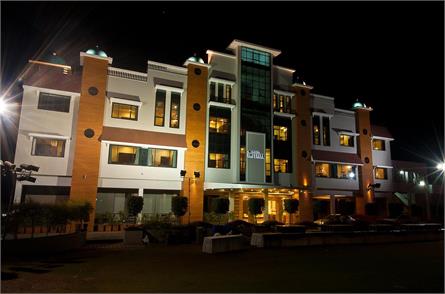
Stay Close To The Lord Of Time…
#Best Hotels to Visit the Magnificent Mahakaleshwar Temple! Ujjain in…
read more
Experience Omnipresence of…
Are you planning a visit to the sacred town of Omkareshwar and looking for…
read more
Where to Stay Near…
#The Ultimate List of Hotels Near Bhimashankar Temple for Every Budget and…
read more
Stay In The Heart of Varanasi…
#Best Hotels to Experience the Magic of Kashi Vishwanath Temple! Where to…
read more
Trimbakeshwar Temple Hotels: A…
#Top 8 Hotels for a Divine Experience! Trimbakeshwar temple is one of…
read more

